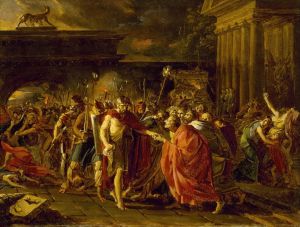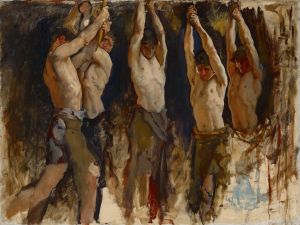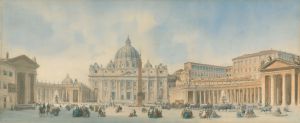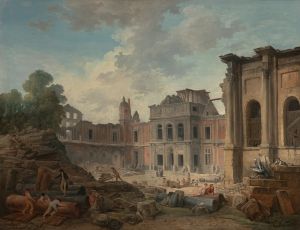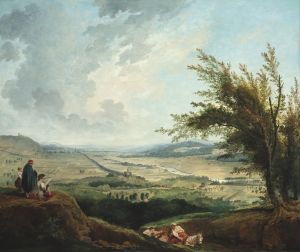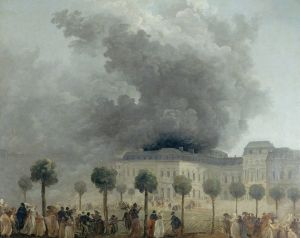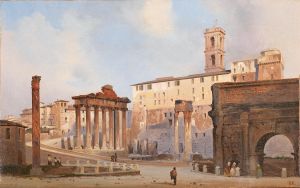
Römische Phantasievedute
A hand-painted replica of Hubert Robert’s masterpiece Römische Phantasievedute, meticulously crafted by professional artists to capture the true essence of the original. Each piece is created with museum-quality canvas and rare mineral pigments, carefully painted by experienced artists with delicate brushstrokes and rich, layered colors to perfectly recreate the texture of the original artwork. Unlike machine-printed reproductions, this hand-painted version brings the painting to life, infused with the artist’s emotions and skill in every stroke. Whether for personal collection or home decoration, it instantly elevates the artistic atmosphere of any space.
Hubert Robert, a prominent French painter, is renowned for his captivating landscapes and architectural scenes, often infused with elements of fantasy and imagination. One of his notable works is "Römische Phantasievedute," which translates to "Roman Fantasy View." This painting exemplifies Robert's fascination with the grandeur of ancient Rome and his ability to blend reality with imaginative elements, creating a dreamlike vision of the past.
"Römische Phantasievedute" is a testament to Robert's skill in capturing the essence of Roman architecture while infusing it with his own artistic flair. The painting features a composition that combines real and imagined architectural elements, a hallmark of Robert's style. This approach allows viewers to experience a sense of nostalgia and wonder, as they are transported to a fantastical version of Rome that never truly existed but feels familiar and evocative.
Robert's work is characterized by his meticulous attention to detail and his ability to render architectural forms with precision. In "Römische Phantasievedute," he employs a masterful use of light and shadow to create depth and dimension, enhancing the illusion of a vast, sprawling cityscape. The painting likely includes a variety of classical structures, such as temples, arches, and ruins, which are common motifs in Robert's oeuvre. These elements are often juxtaposed with lush, overgrown vegetation, symbolizing the passage of time and the inevitable decay of human creations.
The artist's choice of color palette further contributes to the painting's dreamlike quality. Soft, muted tones are often used to evoke a sense of antiquity and timelessness, while strategic pops of color draw attention to specific architectural features or figures within the scene. Robert's ability to balance these elements demonstrates his mastery of composition and his keen understanding of how to guide the viewer's eye through the painting.
Hubert Robert's fascination with ruins and the romanticized vision of ancient Rome can be traced back to his time in Italy, where he studied and absorbed the rich artistic and architectural heritage of the region. His experiences in Rome, in particular, left a lasting impression on his work, inspiring him to create paintings that celebrated the grandeur and mystery of the ancient world. "Römische Phantasievedute" is a reflection of this inspiration, capturing the essence of Rome's architectural majesty while allowing the viewer to indulge in a moment of imaginative reverie.
In addition to his technical prowess, Robert's work is often imbued with a sense of narrative, inviting viewers to ponder the stories behind the scenes he depicts. In "Römische Phantasievedute," one might imagine the lives of the people who once inhabited these grand structures, or the events that led to their eventual ruin. This narrative quality adds an additional layer of intrigue and engagement, encouraging viewers to explore the painting beyond its surface beauty.
Overall, "Römische Phantasievedute" is a quintessential example of Hubert Robert's ability to blend reality with imagination, creating a work that is both visually stunning and intellectually stimulating. Through his expert use of composition, color, and narrative, Robert invites viewers to step into a world where the past and present coexist, offering a glimpse into a Rome that is as much a product of his artistic vision as it is a reflection of historical grandeur.





